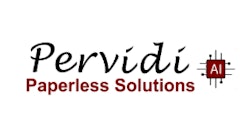It’s a big world out there, yet many of us have never had the chance, or for that matter the inclination, to travel outside our national borders. This limits our perspective of different cultures (let’s face it, TV, movies and the web offer a rather skewed view) and, from an industry standpoint, our understanding of how contractors outside the U.S. approach construction projects.
As a 20+ year veteran in trade journalism, I’ve been very fortunate to receive glimpses into how contractors in other countries tackle construction jobs, and to see first-hand the equipment and technology they use to do it. I’ve also been privy to how manufacturers tailor machines to meet the unique needs of customers across the global regions where their equipment is sold.
While attending the Pre-INTERMAT event last month in anticipation of the 2015 INTERMAT exhibition that will be held April 20 to 25 in Paris, France (paris-en.intermatconstruction.com), I again had a chance to learn about the products exhibitors plan to launch globally, as well as those targeted to the European and other markets. As in North America, there are many suppliers who have yet to “cross the pond” despite a strong interest in capitalizing on what is currently the world’s strongest construction equipment market. Others offer products that address specific niches in their existing territories but would not translate well in North America — at least not without substantial modification.
Yet, even products or designs that don’t currently fit from a North American standpoint may one day find their way onto your jobsites. Take wheeled excavators, for example. Highly popular in Europe due to their ability to travel quickly on roadways and easily navigate narrow European city streets, these machines are now finding a niche among U.S. contractors and municipalities requiring this form of added mobility.
The use of diesel exhaust fluid to help control emissions in diesel engines was used in heavy trucks in Europe well before being added to U.S. vehicle and equipment engines. Anti-vibration and noise-reducing technologies in construction equipment are further examples of advancements that migrated from Europe to the U.S. — stemming from more stringent EU regulations. And several of the hybrid power systems shown at CONEXPO-CON/AGG 2014 were first shown to European customers.
Looking beyond equipment, you can find numerous construction materials and techniques that are being employed or explored in the U.S. that originated overseas. Superpave mixes and warm mix asphalt were used on European roads before being employed on American highways. Pervious concrete was initially applied on European slabs before being incorporated into North American applications. And many green energy alternatives and green building practices were either developed or utilized first in European communities.
The point I’m trying to make isn’t that European construction equipment, technology or operations are more efficient or innovative than those found here. Rather, there are insights to be gained on other continents on alternative methods to get the job done. Attending shows such as INTERMAT 2015 or bauma 2016 in Munich, Germany, can open your eyes to new possibilities and perhaps introduce concepts you can implement in your own business.
Take it from someone who’s been there — there’s nothing like a trade show in Paris (or Munich) in the springtime to get your creative juices flowing!



















